For my upcycling project, I will be focusing on a combination of gothic and naturalism aesthetics.
I was trying to brainstorm materials for the upcycling project and nothing was standing out to me. Just last week, I found a stained glass set up in my house that has not been used in almost 30 years. I decided this was a perfect chance to repurpose something and learn a new skill. In the setup, there were glass cutting tools, a glass grinder, many sets of pliers, a soldering iron, and BOXES of glass ready to be formed into art. I did not want any of these materials to go to waste so I decided to upcycle them for this project. I hope to turn these materials which would otherwise go unused into a stained glass piece of art for this class, and hopefully to display in my house.
Stained glass typically falls into the gothic aesthetic due to its historical background. Stained glass was prevalent in historical churches, frequently depicting biblical scenes. It typically contained a variety of colors and was formed into images of people, animals, and even entire scenes. It was historically formed at a very large scale, as seen in Figure 1 below.
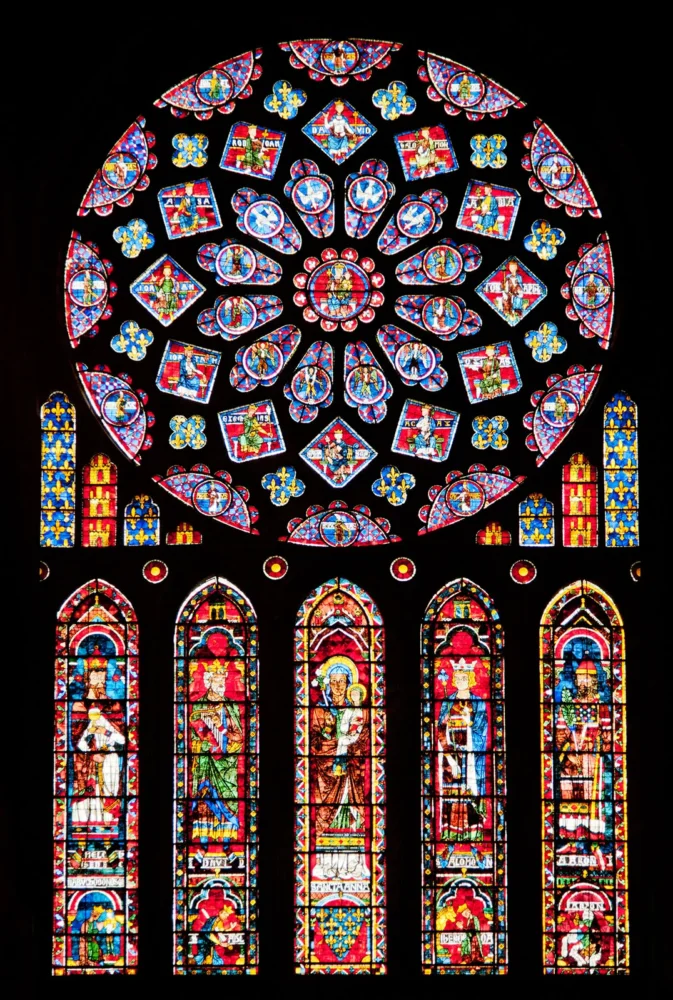
Figure 1: Typical Gothic Stained Glass Windows
Modern stained glass, as an art form, was popularized by Louis C. Tiffany (1848-1933). He was the inventor of a patent for a unique opalescent glass, a new method of glass manufacturing that began in 1885. Tiffany revolutionized the art form with this new type of glass as it gave more depth and dimension to typical stained glass. This was not accepted by others at the time who preferred the traditional gothic methods, using uniform, clear glass, and enamel paint.
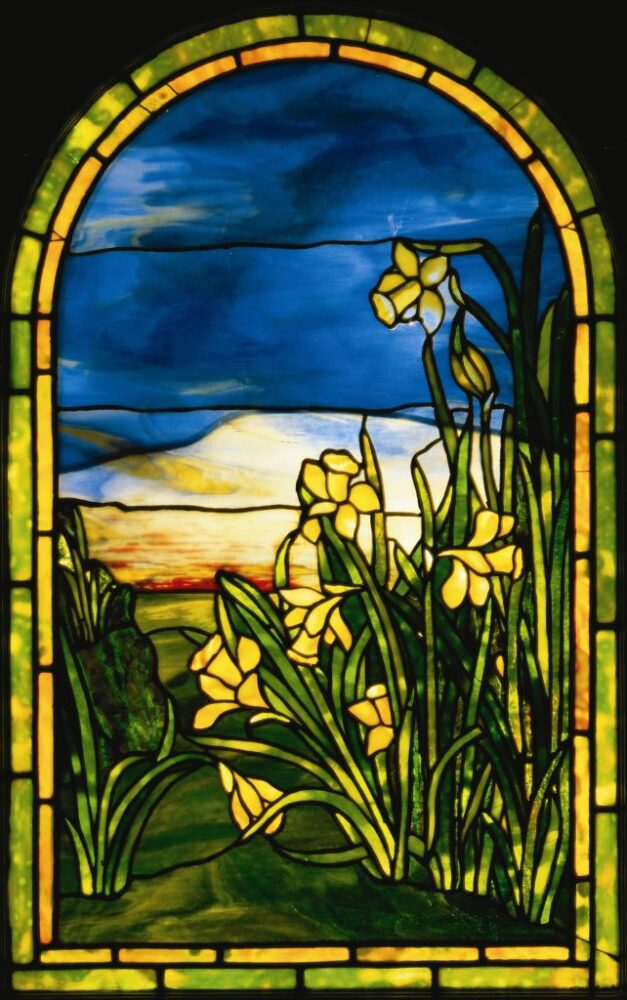
Figure 2: Tiffany’s Stained Glass Window (c. 1916)
Tiffany changed the entire art form with his new patented material and natural style. His pieces frequently reflected the nature around him, typically inspired by flowers and plants. He is mostly known for his stained glass lamps (shown in Figure 3) but also made windows (figure 2), flat display pieces, blown glass, and more.

Figure 3: Tiffany’s Water-Lily Table Lamp (Displayed at the Met)
I wanted to follow a similar aesthetic to Tiffany and make a nature-inspired stained glass piece. I did a bit of research and found some ideas of what I would like to do with this project. I also want to keep the project realistic for my very beginner skillset, so I will be making a small window display, likely around 6″x6″. I have looked at a few inspiration photos and will decide on one in the next week. I would like to focus on a mountain scene that would incorporate naturalism and also work well with the colors of glass I currently have.
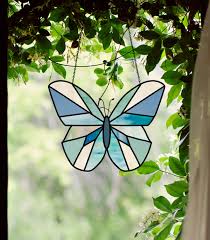
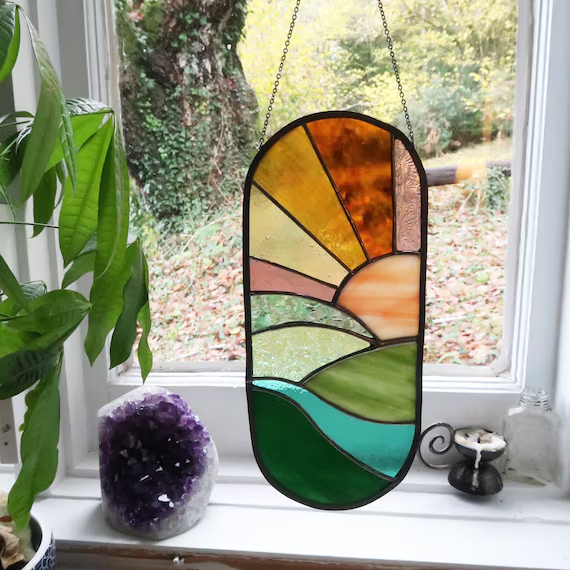
Figures 4 & 5: Inspiration Pictures for Upcycle Project
I hope to learn the art of stained glass and by doing so pick up a new skill! I would also love to apply this new material to personal projects, and maybe even incorporate it into the final project in this class.
Sources
Information
https://stainedglass.org/learning-resources/history-stained-glass
Images
[1] https://www.britannica.com/art/stained-glass/Early-14th-century [2] https://morsemuseum.org/louis-comfort-tiffany/ [3] https://www.metmuseum.org/art/collection/search/4715 [4] https://glassyrockarts.com/products/stained-glass-butterfly-pattern-suncatcher [5] https://www.etsy.com/in-en/listing/1334216778/valley-landscape-stained-glass-pattern
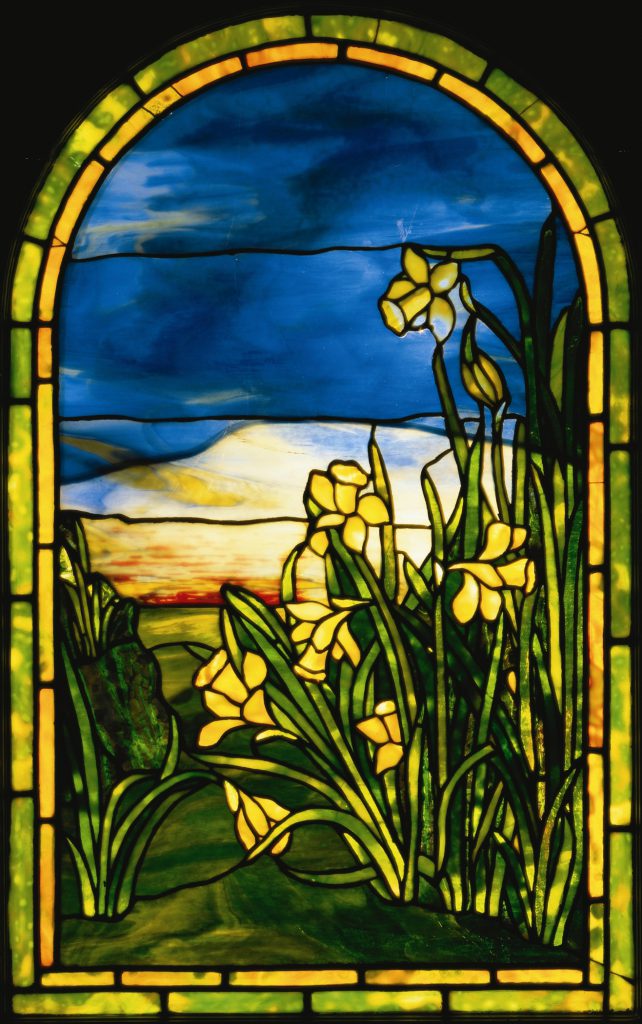
2 Comments. Leave new
Cecelia! I love this! I got into stained glass over covid while my mom was rebuilding her tool set after having to relinquish it many years ago. Its a fantastic outlet I loose track of many hours working on. Please take the necessary precautions for glass shards with the grinder and leaded solder. Good luck!
Hey Jax, that’s so cool that you were able to start a few years ago! I may have to reach out for tips! Will definitely take all the precautions, thanks!